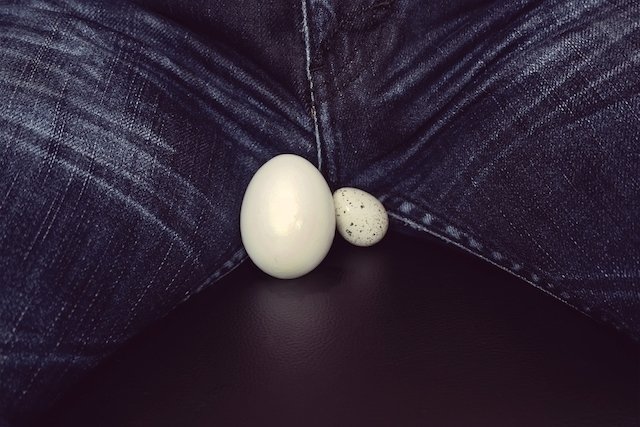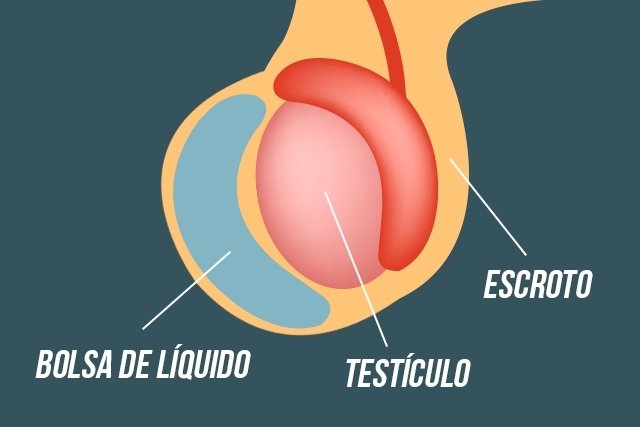A hydrocele is the accumulation of fluid inside the scrotum surrounding the testicle, which can leave it slightly swollen or one testicle larger than the other. Although it is a more common problem in babies, it can also happen in adult men, especially after the age of 40.
Normally, a hydrocele does not cause pain or any other symptom other than swelling of the testicle and, therefore, it does not cause damage to the testicles, nor does it affect fertility, disappearing spontaneously, especially in babies, without requiring treatment. If you have pain in your testicles, see what it could be.
As swelling can also be a sign of more serious illnesses, such as cancer, it is always recommended to consult a pediatrician, in the case of a baby, or a urologist, in the case of a man, to confirm the diagnosis of hydrocele.

Characteristics of hydrocele
To be sure that it really is a hydrocele, the only symptom that must be present is swelling that can affect one or both testicles. The doctor must examine the intimate region, assess whether there is pain, lumps, or any other changes that indicate the possibility of another disease. However, an ultrasound of the scrotum is the most accurate way to find out if it really is a hydrocele.
How is hydrocele treated?
In most cases, hydroceles in babies do not require any type of specific treatment, disappearing on their own within 1 year of age. In the case of adult men, it may be recommended to wait 6 months to check whether the liquid is spontaneously reabsorbed and disappears.
However, when it is causing a lot of discomfort or is progressively increasing over time, the doctor may recommend minor surgery with spinal anesthesia to remove the hydrocele from the scrotum.
This type of surgery is quite simple and can be done in a few minutes and, therefore, recovery is quick, making it possible to return home a few hours after the surgery, as soon as the effect of the anesthesia completely disappears.
Another less commonly used form of treatment, with greater risks of complications and recurrence, would be through aspiration with local anesthesia.

Main causes of hydrocele
Hydrocele in babies occurs because during pregnancy, the testicles have a bag with liquid around it, however, this bag closes during the first year of life and the liquid is absorbed by the body. However, when this does not happen, the bag can continue to accumulate fluid, generating a hydrocele.
In adult men, hydroceles usually occur as a complication of blows, inflammatory processes or infections, such as orchitis or epididymitis.

Sign up for our newsletter and stay up to date with exclusive news
that can transform your routine!
Warning: Undefined array key "title" in /home/storelat/public_html/wp-content/plugins/link-whisper-premium/templates/frontend/related-posts.php on line 12
Warning: Undefined array key "title_tag" in /home/storelat/public_html/wp-content/plugins/link-whisper-premium/templates/frontend/related-posts.php on line 13



